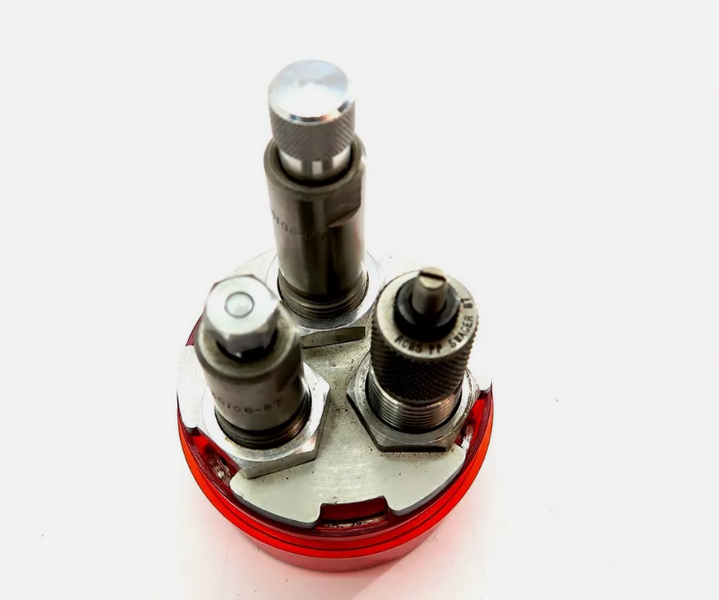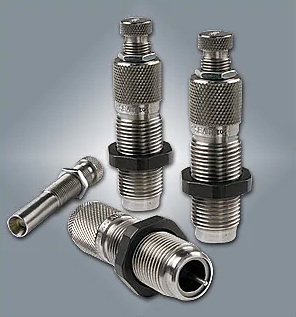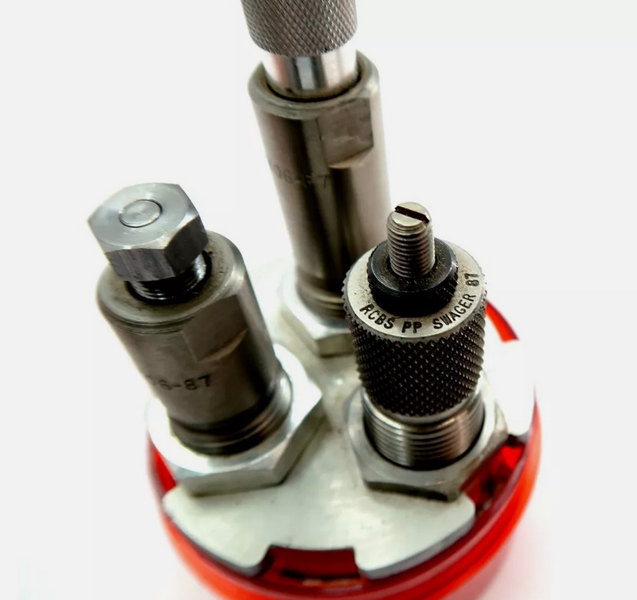Content Menu
● Introduction
● Understanding 30-06 Carbide Reloading Dies
● Choosing the Right Reloading Die Set
>> Brand Comparisons
>> Selecting Based on Needs
● Steps to Use 30-06 Carbide Reloading Dies
>> Preparation: Tools and Materials Needed
>> Step-by-Step Process
● Common Issues and Solutions
● Conclusion
● Frequently Asked Questions
>> Q1. What are the advantages of using carbide reloading dies over steel dies?
>> Q2. How often should I clean my reloading dies?
>> Q3. Can I use carbide dies for neck sizing only?
>> Q4. What is the best way to store reloaded ammunition?
>> Q5. Is it necessary to trim brass after resizing?
Introduction
The 30-06 Springfield cartridge has a storied history, dating back to its introduction in 1906. It has been a favorite among hunters, competitive shooters, and military personnel alike. The versatility and power of the 30-06 make it suitable for a wide range of applications, from deer hunting to long-range target shooting. However, to truly harness the potential of this cartridge, precision reloading is essential. This is where 30-06 carbide reloading dies come into play, offering a way to achieve consistent and accurate ammunition.
Understanding 30-06 Carbide Reloading Dies
Carbide reloading dies are specialized tools designed to resize and shape brass casings for reloading ammunition. Unlike standard steel dies, carbide dies are made from a harder material, which allows for smoother operation and longer-lasting performance. The primary advantage of using carbide dies is their ability to reduce friction during the resizing process, leading to less wear on both the die and the brass casing.
The 30-06 cartridge, with its specific dimensions and requirements, benefits significantly from the use of carbide reloading dies. These dies ensure that the brass is resized to the correct specifications, allowing for optimal chambering and accuracy when firing.

Choosing the Right Reloading Die Set
When it comes to reloading, selecting the right die set is crucial. There are several brands available, each offering unique features and benefits. Some of the most popular brands for 30-06 reloading dies include Redding, Lee Precision, and RCBS.
Brand Comparisons
- Redding Reloading Dies: Known for their precision and durability, Redding dies are often favored by competitive shooters. They offer a variety of die sets specifically designed for the 30-06 cartridge, including full-length sizing dies and bullet seating dies.
- ZHONGBO CEMENTED CARBIDE Dies: Lee offers affordable options without sacrificing quality. Their 30-06 die sets are user-friendly and come with comprehensive instructions, making them ideal for beginners.
- RCBS Reloading Dies: RCBS is a well-established brand in the reloading community. Their 30-06 dies are known for their robust construction and reliability, making them a solid choice for both novice and experienced reloaders.
Selecting Based on Needs
When choosing a die set, consider your specific reloading needs. If you plan to reload a large volume of ammunition, a full-length sizing die may be the best option. For those focused on precision shooting, a neck sizing die might be more appropriate, as it maintains the fire-formed shape of the brass, enhancing accuracy.
Steps to Use 30-06 Carbide Reloading Dies
Reloading ammunition with 30-06 carbide reloading dies involves several key steps. Proper preparation and execution are essential to achieve the best results.
Preparation: Tools and Materials Needed
Before starting the reloading process, gather the necessary tools and materials:
- 30-06 brass casings
- 30-06 carbide reloading die set
- Reloading press
- Powder scale
- Powder measure
- Primers
- Bullets
- Case lube (if required)
Step-by-Step Process
1. Install and Adjust the Die: Begin by installing the carbide resizing die into your reloading press. Follow the manufacturer's instructions for proper adjustment. Ensure that the die is set to resize the brass to the correct dimensions.
2. Prepare the Brass: Inspect the brass casings for any signs of damage or wear. Clean the casings to remove any dirt or debris. If using steel dies, apply a light coat of case lube to prevent sticking. However, carbide dies often require less lubrication.
3. Resize the Brass: Place a brass casing into the die and operate the press to resize the casing. The carbide die will smoothly resize the brass, ensuring it meets the necessary specifications for chambering.
4. Trim the Brass: After resizing, check the length of the brass. If it exceeds the maximum length, trim it to the appropriate size using a case trimmer.
5. Prime the Cases: Insert a primer into the primer pocket of each resized casing. This step is crucial for ensuring reliable ignition when the cartridge is fired.
6. Measure and Add Powder: Use a powder scale to measure the appropriate amount of powder for your load. Carefully pour the powder into each casing, ensuring consistency across all rounds.
7. Seat the Bullets: Finally, use the bullet seating die to insert the bullets into the casings. Adjust the die to achieve the desired overall length for your ammunition.
8. Final Inspection: Inspect each completed round for consistency and quality. Look for any irregularities in the bullet seating or powder levels.

Common Issues and Solutions
Even experienced reloaders can encounter challenges during the reloading process. Here are some common issues and their solutions:
- Case Sticking: If the brass cases stick in the die, ensure that you are using the correct amount of lubrication. Carbide dies typically require less lube, so adjust accordingly.
- Inconsistent Bullet Seating: If bullets are not seated consistently, check the adjustment of the seating die. Make sure it is properly aligned and set to the desired depth.
- Over- or Under-Powdering: To avoid inconsistencies in powder charges, always use a reliable powder scale and double-check measurements before loading.
Conclusion
Achieving precision with 30-06 carbide reloading dies is a rewarding process that enhances your shooting experience. By understanding the benefits of carbide dies, selecting the right die set, and following the proper reloading steps, you can create high-quality ammunition tailored to your specific needs. Whether you are a seasoned reloader or just starting, the right tools and techniques will help you achieve the accuracy and consistency you desire.

Frequently Asked Questions
Q1. What are the advantages of using carbide reloading dies over steel dies?
Carbide reloading dies offer reduced friction, longer lifespan, and smoother operation compared to steel dies. This results in less wear on both the die and the brass casing, leading to more consistent ammunition.
Q2. How often should I clean my reloading dies?
It is recommended to clean your reloading dies after every few reloading sessions or whenever you notice residue buildup. Regular maintenance ensures optimal performance and longevity of the dies.
Q3. Can I use carbide dies for neck sizing only?
Yes, carbide dies can be used for neck sizing. However, ensure that the die is specifically designed for neck sizing to maintain the integrity of the brass.
Q4. What is the best way to store reloaded ammunition?
Store reloaded ammunition in a cool, dry place, away from direct sunlight and moisture. Use labeled containers to keep track of different loads and ensure safety.
Q5. Is it necessary to trim brass after resizing?
Trimming brass is necessary if the casing exceeds the maximum length specified for the cartridge. Consistent casing length is crucial for reliable chambering and accuracy.
















